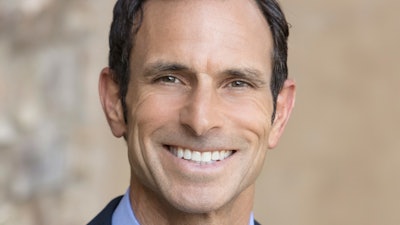Marta is a 41-year-old divorced mother of three who works as an office assistant at a dental practice in San Luis Obispo County. She possesses an associate degree earned in her early 20’s from her local community college.
Marta also takes care of her mother, who has declining health and requires increasing levels of care. So, while she aspires to become a dental hygienist, the pursuit would require uprooting her family, leaving her job, and accruing significant debt. Although her family is in San Luis Obispo County, she is more than 100 miles from Cal Poly San Luis Obispo University. It is the closest university, but it doesn’t offer such a program. Community colleges in the area remain mired in the political thicket of California where community college baccalaureate degrees in career technical programs continue to meet resistance from the California State University System (CSU), a full seven years after 15 pilot programs were launched following protracted legislative negotiations.
Marta is one of approximately 25 million adults in the U.S. identified as place-bound, according to the American Council on Education (ACE) Center for Policy Research and Strategy (Hillman, Nicholas, & Weichman, 2016). When seeking increased social and economic mobility through higher education, many place-bound individuals encounter limited or no realistic options for affordable, quality postsecondary education programs. While online education has grown exponentially in the U.S., for a variety of reasons - including the necessary practicum and applied elements of career programs — such offerings simply are not feasible for some individuals and professions. Lawrence A. Galizio
Lawrence A. Galizio
A research brief on community college baccalaureate (CCB) students from the New America Foundation found, “Many CCB students are deeply rooted in their communities, often raising children and/or caring for aging parents, and they want to stay local” (Meza & Love, 2022). And the ACE Report: Education Deserts: The Continued Significance of “Place” in the Twenty-First Century, observes “...geography and place are often overlooked” in discussions concerning the decision-making calculus of those contemplating enrollment at a postsecondary educational institution.” Despite increased opportunities for online educational programming, their analysis concludes “...it’s no panacea for the structural inequalities built into the current postsecondary system” (Hillman et al., 2016).
The ACE Report details what has become the useful identification of education deserts — defined as geographical locations where there are no colleges or universities in the vicinity or one community college is the only public broad-access institution in the area. Roughly 6% to 12% of the U.S. population live in education deserts, with a disproportionately large rates of Native Americans (20%) and one-in-10 African American/Black and Latino/Hispanic adults living in such geographical areas (Hillman et al., 2016). Despite this recognition, the place-bound student is often absent from meaningful equity efforts in higher education that seek to confront and overcome structural inequalities affecting opportunities for low-income students and students of color. Most demographic and related higher education surveys do not include a box for place-bound students to check.
The failure to adequately account for place-bound students in higher education public discourse, policymaking, and practice seeking to address the historical wealth inequalities and declining social and economic mobility in the U.S. allows private high-cost, for-profit providers to flood the market.
The plight of the place-bound student and the existence of education deserts offer another compelling equity-based argument for expansion of the community college baccalaureate degree. According to the Community College Baccalaureate Association, about two dozen states offer baccalaureate degrees at their public community colleges (CCBA, 2023). These degrees are often referred to as applied bachelor’s degrees for their overwhelming focus on particular professions, economic sectors, and localized in-demand labor shortages. Nevertheless, in California and most states with firmly established universities with powerful ties to policymakers, wealthy and active alumni, and higher education structures built for a decidedly different era and political economy, establishing and advancing community college baccalaureate degrees is typically a Sisyphean task.
This is an unacceptable reality considering the publicly available evidence of the utility of the community college baccalaureate degree for underserved student populations — including place-bound students — labor market demand, the historical wealth gap, and the equity imperative for low-income and students of color (Meza & Love, 2022; Bragg & Harmon, 2022; Wright-Kim, 2022; Hoang, et. al., 2022). Public community colleges have ties to local and regional economies, faculty possessing advanced degrees in the liberal arts and sciences, and direct experience in industry. As such, their community-generated mission, relative affordability, and their recognized connection to place and the geographical regions they serve and help constitute uniquely position them to assist students like Marta, who seek educational and career opportunities to improve their lives and communities.
Lawrence A. Galizio is president and chief executive officer of the Community College League of California.
The Roueche Center Forum is co-edited by Drs. John E. Roueche and Margaretta B. Mathis of the John E. Roueche Center for Community College Leadership, Department of Educational Leadership, College of Education, Kansas State University.
















